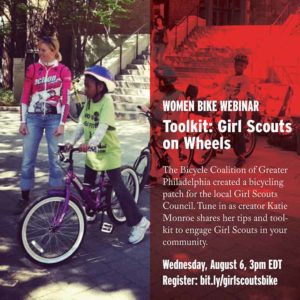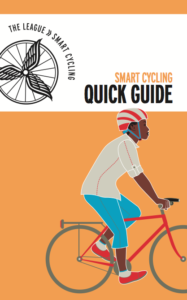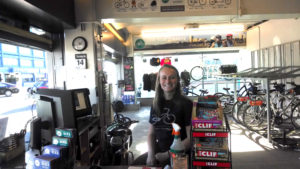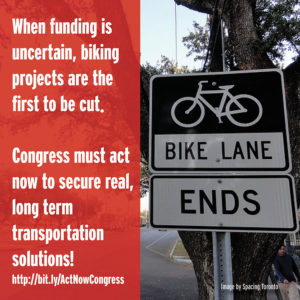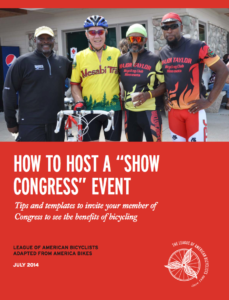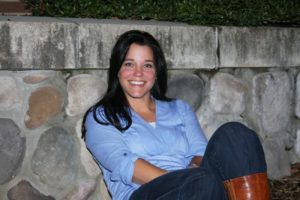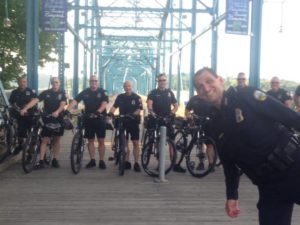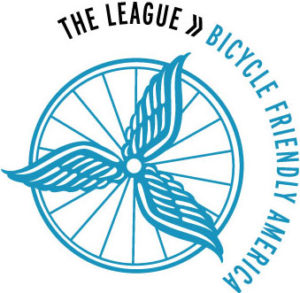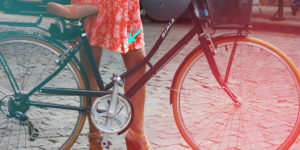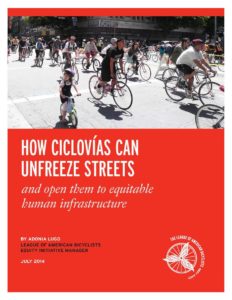Blog
There’s a gaping pothole in the path to more women riding: Keeping young women excited about bicycling. Research shows that, at about age 14, many girls abandon their bikes for a variety of reasons: Other girls aren’t riding; their friend don’t think it’s cool; exercising is awkward. How do we keep future female riders in the saddle? Last year, Katie Monroe with the Greater Philadelphia Bicycle Coalition piloted a promising partnership that can be replicated nationwide.
Read More →During my time with the League, one piece of feedback has remained consistent: It’s difficult to get people to commit to 9 hours of bike education. So today, we’re proud to introduce our brand-new Smart Cycling Quick Guide! Over the past few months, I’ve explored ways in which we can create an entry-level guide that can be used to market the Smart Cycling program. This exploration, combined with a lot of input from League Cycling Instructors (LCIs), has helped with the development of this accessible Quick Guide to our material.
Read More →The most bicycle friendly places are those that adopt city ordinances to help improve or promote bicycling. One easily visible example is a bicycle parking ordinance like the one in Santa Monica, Calif., which not only ensures an adequate supply of racks at destinations, but also requires event organizers to have monitored bicycle parking for 200 – 250 bikes if attendance is expected to reach 1,000 or more (requiring 3 attendants).
Read More →UPDATE: Congratulations Senators Boxer, Corker and Carper! In a slightly surprising but welcome vote last night, the Senate passed an extension and funding patch for the Highway Trust Fund that expires at the end of 2014 rather than May 2015 (as proposed by the House and original Senate bill). This is important as it forces the hand of this Congress to come up with a long term transportation bill and revenue source, rather than simply delaying the difficult decisions ahead as to how to do that
Read More →As August approaches, Washington, D.C., starts to clear out. On August 1, Congress shuts down for a month and members escape the city to return to their districts and meet with constituents to learn what matters to people in their district. This is a great time to invite your member of Congress to visit a new bike project or program, or to join a local club on a bike ride.
Read More →Joining the League is a way to share the love of bicycling. As a longtime member, League Cycling Instructor and an LCI coach, Laurita exemplifies that desire to share the joy and freedom of bicycling, traveling all over the country to teach bike education. Hamzat Sani, a former League staff member, interviewed Laurita about her passion for bicycling in 2013.
Read More →Advocacy Advance’s most recent Navigating MAP-21 Workshop was held in Chattanooga, Tennessee. Boasting an extensive transportation history and known for the “Chattanooga Choo Choo” by the Glenn Miller Orchestra, Chattanooga is located is southeastern Tennessee, just north of the Tennessee-Georgia border, and nestled along the Tennessee River and surrounding mountains.
Read More →In all my travels, I’ve seen a lot of great things on the street, from green lanes to bike boxes. But those high-profile facilities are the result of something far less visible: words. For a truly Bicycle Friendly Community, before you can put paint to pavement, you need the laws and policies that legitimize and encourage safe cycling.
Read More →For many women, clothing is not an insignificant barrier to bicycling.While advocates and educators and ride leaders are making huge strides in getting more women in the saddle, our National Women’s Bicycling Forum has shown that there’s an equally exciting movement among entrepreneurs to create commercial products aimed at addressing women’s needs. One such product that’s been getting recent headlines is the Skirtweight, so we got in touch with its creator, Lani Tarozzi, to hear her bike story and advice for fellow Women Bike entrepreneurs.
Read More →Can a temporary street closure have lasting effects on everyday transportation habits? The social psychology concept of “unfreezing” habit suggests that it can, as detailed in a new report on “How Ciclovías Can Unfreeze Streets.” This report is based on fieldwork I undertook as an anthropologist studying bicycle advocacy and street culture in Los Angeles from 2008 to 2011. My central project was helping to organize the open street event CicLAvia. I found the ciclovía to be useful for identifying the “human infrastructure” that helps or hinders our work as active transportation change agents.
Read More →